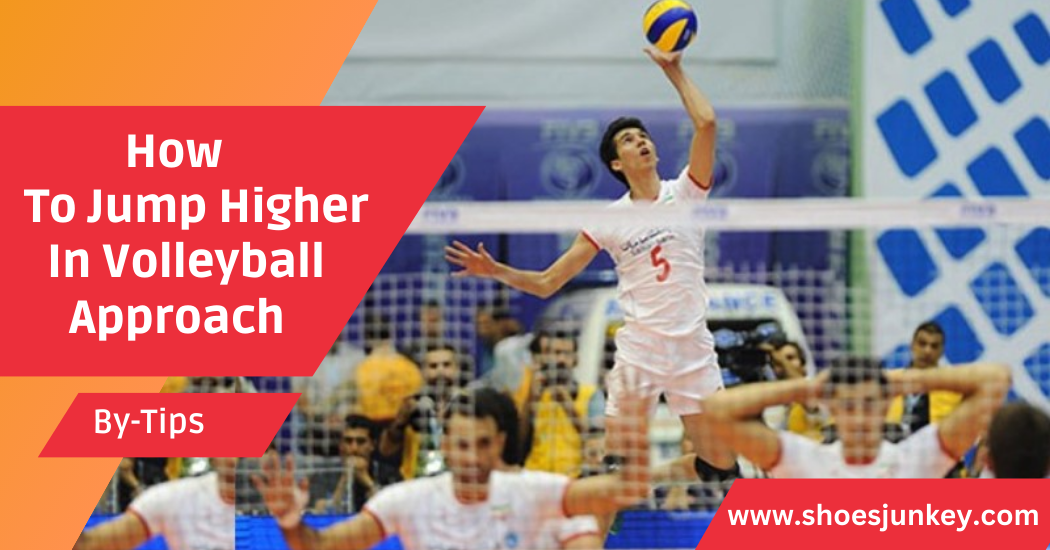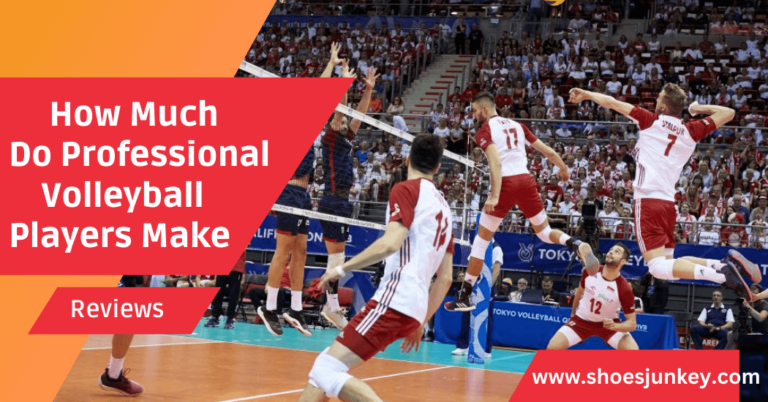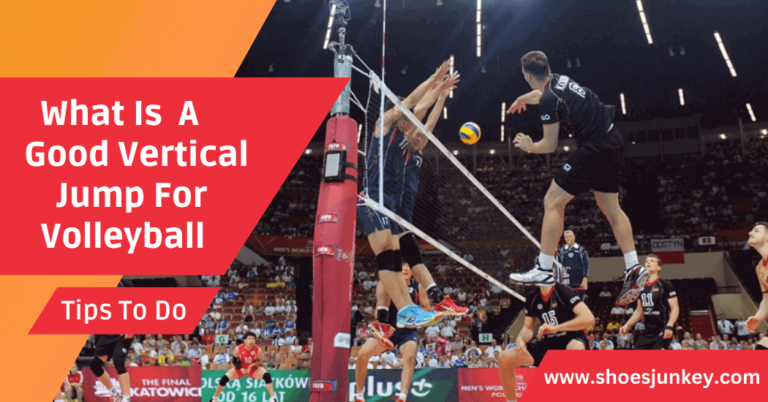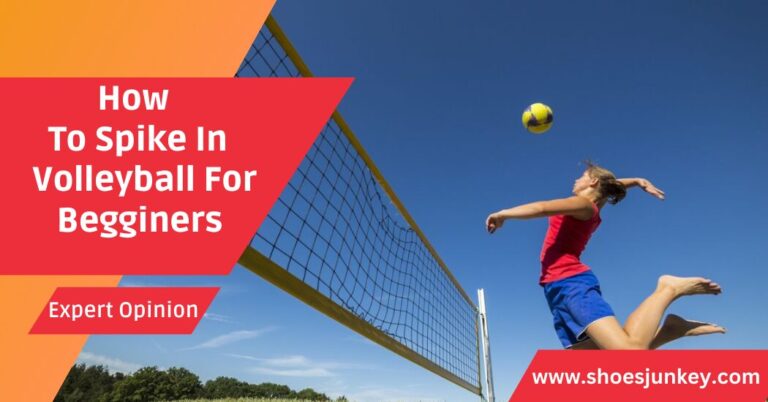How To Jump Higher In Volleyball Approach?
As a volleyball enthusiast, you know that a good jump is crucial for not only spiking the ball, but also for successful blocking and serving. Having an impressive vertical leap can greatly improve your overall performance on the court.
In this article, we’ll explore the mechanics of a proper volleyball approach, discuss the role of different body parts and muscles and provide various exercises, drills and techniques that can help you achieve better results while jumping and making an approach.
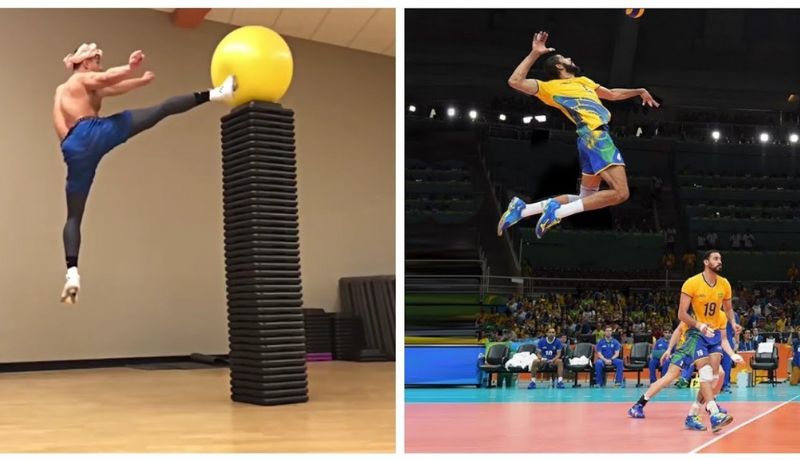
How to jump higher in a volleyball approach?
To jump higher in volleyball, it is crucial to master the following steps:
- Proper Approach Technique: Start with a three-step approach which includes left-right-left steps for right-handed players and right-left-right steps for left-handed players. Aim to accelerate during these steps to gather momentum for your jump.
- Use Arms for Momentum: When taking the last step of the approach, bring your arms behind you. As you jump, swing them upward for added momentum.
- Strengthen Lower Body Muscles: Regularly perform exercises that strengthen your lower body muscles, including squats, lunges and plyometrics such as box jumps.
- Core Stability: A strong core is important for balance during the jump and power during the swing. Include core exercises like planks and Russian twists in your workout routine.
- Flexibility: Being flexible can help increase your jump height. Incorporate regular stretching into your workout regime.
By combining these techniques with dedicated practice, you can improve your vertical leap in volleyball. However, always remember to warm up properly before games and training to avoid injuries.
Understanding the Mechanics of Jumping
Achieving a powerful and controlled jump during your approach requires a combination of strength, power, technique, form, flexibility, balance and mental preparation. Let’s start by breaking down the key techniques you’ll need to focus on:
Building Strength and Power
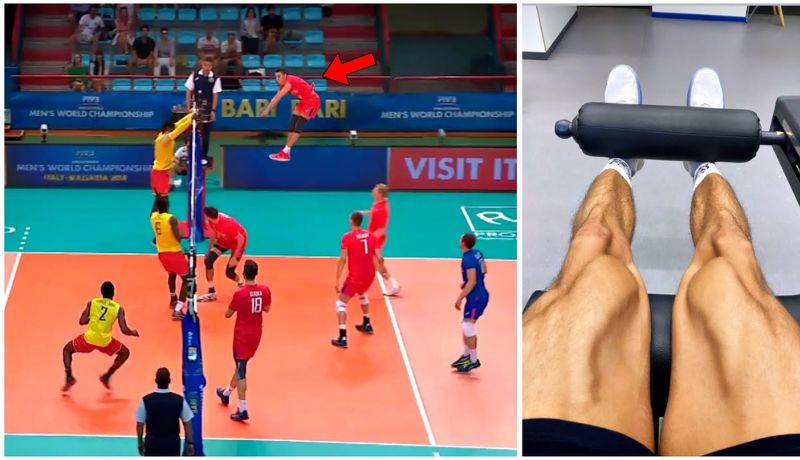
Strong legs and a powerful core are essential for generating the force needed for a high jump. Incorporating exercises like squats, lunges, box jumps and plyometrics into your workout routine can help to develop explosive strength and power in your lower body.
Perfecting Technique and Form
The volleyball approach requires proper technique and form in order for you to hit your highest jump. Here’s a step-by-step breakdown of the volleyball approach technique:
- Begin with the left foot forward and the right foot back, arms relaxed at your sides.
- Take a small step with the left foot, starting to swing your arms back.
- Take a big second step with the right foot, driving your arms forcefully back to help generate momentum for your jump.
- Bring your left foot up to meet your right foot, simultaneously raising your arms and driving your hips and knees upwards, using your core muscles to generate force.
- Explode upwards with both feet, using your arms to propel you even higher.
- Keep your core engaged and streamlined throughout the entire jump for maximum height and control.
Enhancing Flexibility and Balance
Flexibility plays an important role in achieving a higher jump, as it allows proper range of motion and efficient transfer of power. Make sure to incorporate stretching exercises for improved flexibility, focusing on your hips, hamstrings, quadriceps and calves. Additionally, including balance exercises in your training routine can improve stability and control during the approach.
Mental Preparation and Visualization
The psychological aspect of jumping higher should not be overlooked. Techniques for mental preparation before the approach include deep breathing, focusing on a target and visualizing yourself successfully executing the perfect jump and spike. Visualization can help you enhance your jump height and overall performance by reinforcing proper technique and confidence.
Injury Prevention and Recovery
Warm-up and cool-down routines are essential for preventing injuries, such as strains and sprains. Make sure to spend time warming up your muscles and practicing dynamic stretches before starting any volleyball drills or strength training exercises. Common volleyball-related injuries can be avoided by maintaining proper technique, listening to your body and avoiding overtraining. Tips for effective recovery include stretching, massage, icing and proper nutrition.
Incorporating Nutrition and Rest
Proper nutrition is vital for muscle growth and energy production. A balanced diet rich in protein and carbohydrates can help meet your body’s needs. Additionally, adequate rest and sleep are crucial for muscle recovery and performance improvement. Aim for at least 8 hours of sleep each night and make sure to listen to your body if it needs extra rest and recovery time.
Monitoring Progress and Setting Goals
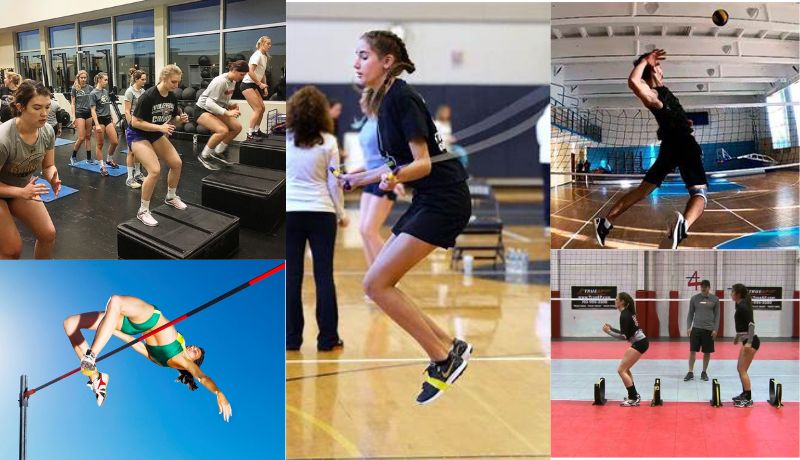
Progress monitoring and goal setting are crucial components to improving your volleyball performance. Here are some steps to guide you:
- Set clear and measurable goals: Start by setting small, attainable goals and gradually progress to more challenging ones as your skills improve.
- Regularly track your progress: Document your training sessions and note improvements in your technique, strength, flexibility and jump height over time.
- Celebrate small successes: Each improvement, no matter how minor, is a step towards your ultimate goal. Celebrate these milestones to keep motivation high.
- Adjust your goals as needed: If a goal becomes too easy or too hard, don’t be afraid to adjust it. The purpose of goal setting is to challenge yourself while still keeping your objectives within reach.
- Seek feedback: Regularly ask for feedback from coaches, peers, or trainers. They can provide valuable insights into your technique and areas for improvement.
- Stay consistent: Consistency is key in making progress. Stick to your training routine, maintain your nutrition and ensure enough rest for optimal performance and recovery.
With these tips and techniques, you can continue to improve your vertical jump and overall volleyball performance. Remember to listen to your body, stay motivated and have fun on the court!
As a bonus tip, don’t forget about the importance of proper footwear for preventing injury and maximizing performance. Opt for supportive and cushioned shoes specifically designed for volleyball players. Keep practicing and you’ll be soaring over the net in no time! Keep reaching for new heights, both on and off the court.
Tips and Tricks for achieving a higher jump in Volleyball
To enhance your volleyball jumping capabilities, remember these handy tips and tricks:

- Master the Approach: A three-step or four-step approach is ideal for getting a high and powerful jump. Each step in the approach is important for building momentum and power for your jump. For right-handed hitters, the approach sequence is right-left-right-left, while left-handed hitters use a left-right-left-right sequence.
- Jump Vertically, Not Horizontally: To maximize your jump height, the force should be directed upwards, not forwards. Make sure your chest and head are lifted and your energy is focused on reaching up, not moving forward.
- Use Your Arms: Your arms can significantly contribute to your jump height. Swing them down as you begin your approach, then swing them up powerfully to generate upward momentum as you jump.
- Stay Balanced: Balance is key to a good jump. Try to keep your body straight and avoid leaning too far forward or backward during your approach and jump. This will help to keep you stable and allow you to jump higher.
- Rotate Your Hips: A final tip is to use hip rotation for added power. As you jump, rotate your hips to add momentum and force to your jump.
- Practice Plyometrics: Plyometric exercises can help improve your speed, strength and jumping ability. Some effective plyometric exercises include box jumps, jump squats and burpees. Incorporate these into your training routine to build explosive power.
- Stay Hydrated: This might seem obvious, but hydration plays a crucial role in your overall performance. Dehydration can lead to muscle fatigue and cramps, which will limit your jumping ability. Make sure you’re drinking plenty of fluids before, during and after games and training sessions.
- Build Core Strength: A strong core is essential for generating power and stability during jumps. Incorporate exercises such as planks, Russian twists and bicycle crunches to strengthen your core muscles.
Remember to always listen to your body and avoid overtraining. With consistent practice, proper technique and these tips in mind, you’ll be well on your way to achieving a higher jump in volleyball! Keep pushing yourself and never give up on your goals. So go out there, have fun and reach for the sky!
Conclusion:
In conclusion, with the right technique, practice and discipline anyone can reach great heights in their volleyball approach jump. Though your jump height may not be what it was during your high school athletic days, a bit of training and work can go a long way towards improving your jumping ability.
Regardless of whether you’re an amateur or a professional athlete, proper form and technique are essential to ensure maximum performance. With some practice and dedication the sky’s the limit in terms of how well you can jump as well as how far!
Remember that changing your body can be difficult but with time and effort you will see an improvement in no time. So keep up with your exercises and attempts to get your body into shape – the rewards will come sooner than you think. Good luck!

